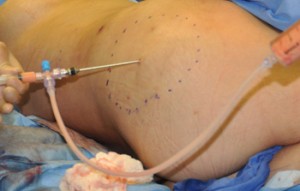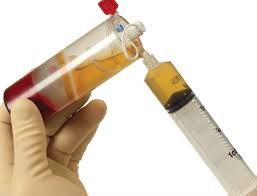
To improve the reliability of injected fat survival, numerous methods of graft harvest, concentration and injection have been proposed and tried. At this point, the differences in these three basic graft procedures is not really that different amongst experienced physicians performing buttock augmentation. Adding pharmacologic agents to the fat has not been well explored up to the present due to the lack of knowing what may be successful.
The most logical additive to fat is PRP, platelet-rich plasma. It is a natural concentrate from the patient’s own blood and has an established history of aiding wound healing and generating angiogenesis through its growth factor and cytokine content. It can be easily added to fat grafts and has been done anecdotally for all kinds of fat grafting with variably reported results.
In the September 2013 issue of the European Journal of Cosmetic Surgery, an article appeared entitled ‘Results and Long-Term Patient Satisfaction After Gluteal Augmentation With Platelet-Rich Plasma-Enriched Autologous Fat’. In this paper, a study was done to investigate the long-term results and patient satisfaction after PRP-enriched lipofilling of the buttocks for aesthetic augmentation. In twenty-four (24) patients, both buttocks were injected with PRP-enriched fat and liposuction done on surrounding contour zones. The mean fat injected was just over 475cc for both sides. No infections, hematoma, seromas or liponecrosis (oil cysts) occurred. Patients were followed out to nearly four years with high patient satisfaction at 3 months after surgery with a slight decline over the remaining study period.
This small study concludes that PRP-enhanced lipofilling is safe with a low complication rate. This would be expected. The real question is does it improve fat injected buttock augmentation results? Unfortunately this study, regardless of the number of patients treated, can not really answer this question. Unless each patient served as their own control (one buttock got regular fat and the other PRP-enriched fat), the results can not be directly compared.

Dr. Barry Eppley
Indianapolis, Indiana


